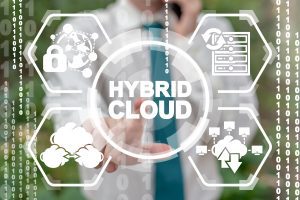Five pillars of secure cloud transformation.

Companies’ cloud transformation ambitions have accelerated in the past few years thanks to an increased appetite for enhanced digital technologies, as well as more pressure to support remote working. According to the Office of National Statistics, 85% of employees now expect options for hybrid work, demonstrating that even as the pandemic passes, the demand for flexible cloud-based services shows no sign of abating.
However, the cloud services needed to facilitate new digital ways of working also raise new cybersecurity challenges, which can seem daunting. Organisations that allow these challenges to deter them from embracing cloud transformation options, will only find themselves falling further and further behind their competitors. Indeed Gartner predicts that, by 2025, cloud native platforms will provide a foundation for over 95% of new digital initiatives.
The security challenges presented by the cloud are different to those associated with traditional on-premises security, where everything sat behind a firewall. To mitigate these new risks, organisations should introduce and follow a secure cloud adoption framework (S-CAF) based on the following five key pillars:
Pillar 1: Adopt a zero-trust mindset Zero Trust works on the assumption that all users, devices and activities are malicious until proven otherwise. It may sound harsh, but the modern threat landscape has made this approach necessary in order to avoid the pitfalls of remote working, where so many endpoints go unguarded.
Pillar 2: Threat detection and response With cyberattacks evolving faster and faster, the best cybersecurity approach for many organisations is to ensure that the tools used to mitigate attacks are just as strong as tools used to detect them in the first place. It is simple logic that the earlier a threat is spotted, the quicker it can be acted upon, but where this level of advanced detection is not possible, organisations must at least be positioned to
reduce harm.
Pillar 3: Asset protection Organisations must have appropriate policies and processes in place in order to account for all their assets throughout their respective lifecycles. From a cybersecurity perspective, these policies should cover software, hardware and corporate data.
Pillar 4: Identity and governance Having visibility of every user’s access permission is crucial to securing all endpoints within an organisation. So too is the ability to adjust levels of access quickly and easily in response to employees joining, leaving or changing roles. This pillar is essential as it minimises the opportunity for employees to abuse their access rights.
Pillar 5: Innovation security Innovation may come in a variety of forms but when preparing and deploying successful security measures, development, security and operations (DevSecOps) is proven to keep organisations ahead of any would-be attackers.
Baking in security with DevSecOps
For a cloud transformation journey based on the S-CAF model to be successful, it’s critical that security controls and measures are baked into an organisation’s operations. DevSecOps provides this foundation. In an environment where cloud-based services can be provisioned quickly via self-service portals, DevSecOps plays a central role in ensuring security risks are identified and remediated in the quickest possible timeframe.
This approach requires organisations to think critically about their infrastructure security from the beginning of the transformation journey. Yet as it is more than a set of new tools, it should incorporate cultural factors, such as policy and governance. For example, policies should be set at the architecture level so they can evolve alongside the cloud transformation journey. This means that as organisations scale, the guidelines remain relevant and useful, rather than a hinderance requiring regular manual updates. With DevSecOps, processes can be dynamic and constantly tailored to the organisation’s specific applications and infrastructure requirements.
The key to developing these areas is to focus on the security controls that need to be in place when moving from on-premises architecture to single or multi-cloud hybrid architecture. The initial focus should be on the technical assets rather than on the concept of Zero Trust, and with it threat detection, identity, and governance, which are important at other stages of the cloud transformation journey.
Conclusion
While the S-CAF is just one approach to a secure cloud transformation, its approach is inclusive and well positioned to tackle the challenges associated with moving to a cloud-based environment. The five pillars are applicable to an organisation of any size, operating in any sector, and they will provide security teams with a firm foundation to tweak and tailor cloud security to meet the needs and demands of customers and employees now and in the future.
Organisations that insulate themselves from the dangers of an open internet, will find it is no longer a case of putting up a border and stopping people from crossing it. Transforming to the cloud demands a more agile, modern approach and the sooner one is selected and deployed, the sooner organisations can guarantee important data and information is secure.
